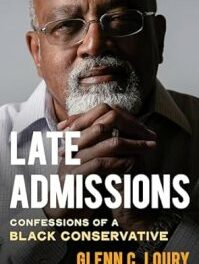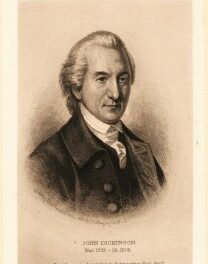We support our Publishers and Content Creators. You can view this story on their website by CLICKING HERE.
Concluding the quest for the ideal classical literature curriculum, we find ourselves entering the senior year and, simultaneously, entering the period of modernity. The freshmen had been immersed in pre-Christian Greece and Rome, the sophomores in the Christian Middle Ages, and the juniors in the early modern period with William Shakespeare. Now, as students enter their final year of high school, they enter the industrial age and the modern period.
There are so many great texts to choose from once we enter the nineteenth and then the twentieth centuries that it’s important to proceed with a couple of criteria, the first of which embraces a spirit of compromise and the latter of which is utterly uncompromising. Beginning with the compromise, we would need to concede that the quest for the perfect classical curriculum requires an inquest with respect to whether one or two semesters of the junior year should be spent on Shakespeare. Squeezing the Bard of Avon into a single semester is akin to squeezing a giant into a hobbit hole; even if it can be done it’s going to be mighty difficult to fit everything in. Doing so, however, would free up an additional semester for the many great texts from the nineteenth and twentieth centuries. As for the latter utterly uncompromising criterion, it is that no books published in the twenty-first century should even be considered. There are many good reasons for this but the most important is that a good book, like a good wine, improves with age. If a book is authentically good, as distinct from being merely faddish, it will stand the test of time; if it is merely up to date, it will be out of date very soon. As C. S. Lewis reminds us, fashions are always coming and going, but mostly going. Thus, the cost of seeking to be “relevant” to present fads is to guarantee irrelevance as soon as the fads fade. As a rule of thumb, therefore, a work of literature should have been published for around fifty years before being considered for canonization.
As the spirit of compromise with respect to the time spent on Shakespeare provides the wriggle room of an additional semester, if need be, we have a little more license with respect to the number of modern titles we can select.
The modern period in literature can be said to have begun with the Romantic reaction to the empiricism, materialism and scientism of the so-called “Enlightenment”, the sprit of which had prevailed in the eighteenth century. At the end of that century, in 1798, Wordsworth and Coleridge had published Lyrical Ballads, a volume of poetry which heralded the restoration of metaphysics to the heart of the culture, especially in the quest for beauty as the means of attaining goodness and truth. Considering its historical importance, therefore, Romanticism should be the starting point for the students’ engagement with modernity. The selection of poems could be very short, enough to serve as a sampler, or an appetizer. Personally, I would suggest “I Wandered Lonely as a Cloud” by Wordsworth, “Hymn Before Sunrise” by Coleridge, and “To a Skylark” by Shelley. Staying with Romanticism, Mary Shelley’s Frankenstein offers much scope for discussion on perennially relevant issues of scientism, technology, bioethics and the dignity of the human person. Finally, Jane Austen’s Sense and Sensibility serves as a sound and balanced response to the unsound and unbalanced extremes of rationalistic “sense” and romantic “sensibility”.
After the Romantic period comes the Victorian age, a veritable golden age of literature. Dickens should feature prominently. The obvious selection would be A Tale of Two Cities, the bestselling of all his novels and certainly amongst his best. This timeless and cautionary novel is not as weighty in terms of wordcount as some of Dickens’ other tomes and is therefore more curriculum-friendly. In addition, it has the advantage of integrating well with the history curriculum, conveying knowledge of the secularist horrors of the French Revolution. Another curriculum-friendly work by Dickens, due to its brevity, is A Christmas Carol. It would be a good festive gift for the students were this to be the final text of the fall semester, a Christmas present ensuring the presence of the spirit of the season.
As for the American literature that should find itself on the ideal curriculum, I would suggest that the short stories of Nathaniel Hawthorne would work best and should be the first texts taught in the spring semester of the senior year. These are more accessible than the poems of Longfellow, healthier than the musings of Poe, and less eclectically esoteric than the fiction of Melville. With regard to Melville’s best-known work, Moby Dick, it is excluded because of its unmanageable length and also because it’s a difficult text for high school students to grasp. Melville’s shorter fiction is more accessible but its meaning is less clear than Hawthorne’s. Fiction that asks more questions than it answers, if indeed it answers any questions at all, should be left for the undergraduate level.
Eyebrows will surely be raised at the exclusion of Mark Twain. Huckleberry Finn is not as accessible as it once was and is also on the longer side of the accessible length spectrum. Twain’s essays are a delight and some of these could be included and Tom Sawyer should certainly find a place on the Middle School curriculum.
Having included Hawthorne’s short stories as American literature’s sole representative from the nineteenth century, any alleged sin of omission will be magnified by the inclusion of a selection of Flannery O’Connor’s short stories as the only American presence in the twentieth century, except for that of T.S. Eliot, whom many may consider to have become British, his having “gone native” following his arrival in England at the very beginning of his literary life. Both of Eliot’s greatest literary achievements, “The Waste Land” and “Four Quartets”, are too challenging, the first for its intertextual allusiveness and consequent elusiveness, the latter for its profound theological mysticism. Since Eliot’s presence is essential, and since the usually taught “Prufrock” does not do him or his oeuvre justice, the best choice of Eliot’s remaining work would be Murder in the Cathedral. Apart from its relative accessibility, it serves to ensure that drama is present on the senior curriculum, in addition to novels, poetry and short stories. Its other advantage is the timelessness of its theme, which reflects the theme of Antigone in its re-presentation of the perennial tension between secular power and religious liberty. As a means of squeezing a little more Eliot onto the curriculum, “The Journey of the Magi” might be added to A Christmas Carol as a seasonal offering at the end of the previous semester.
Although Orwell’s Nineteen Eighty-Four is too dark and too suggestively nihilistic for inclusion, Animal Farm would be indispensable, even though it also ends with a suggestion of nihilistic or cynical defeatism. The lessons it teaches in fabulous form supply a necessary antidote to the dangers of secularist and progressivist utopianism.
Tolkien would not be on the high school curriculum, The Lord of the Rings being too long, but one would hope and expect that student would have read The Hobbit in middle school. Other classic twentieth century fiction, such as that by Evelyn Waugh, Graham Greene, Ernest Hemingway or Sigrid Undset, would be omitted due to their themes and tone being more suitable for undergraduate study. Works such as The Power and the Glory and Brideshead Revisited, as great as they are, require a level of emotional and psychological maturity which most high school students will not have attained.
The final author on the ideal high school curriculum would be C.S. Lewis. As for which of his works to choose, I would shy away from my personal favourites, That Hideous Strength and Till We Have Faces, which were also Lewis’ favourites, because they might be a little difficult for high school. Instead, I would choose The Great Divorce and/or Out of the Silent Planet, the first novel in the space trilogy. Public schools, such as classical charter schools, might choose the latter because the former is too Christian to be tolerated in the age of secular “tolerance”. Christian schools, on the other hand, might give it preference. As for my personal preference, I’d include both these masterpieces of imaginative fiction by the inimitable Lewis as a perfect way for high school students to end their four years of classical literature.
In summary, and to clarify, the fall semester of the senior year would include a sampling of Romantic poetry, Shelley’s Frankenstein, Austen’s Sense and Sensibility, and two works by Dickens (A Tale of Two Cities and A Christmas Carol), with “Journey of the Magi” by T.S. Eliot thrown in for good measure. The spring semester would commence with a selection of short stories by Nathaniel Hawthorne and Flannery O’Connor, followed by Eliot’s Murder in the Cathedral, Orwell’s Animal Farm, and one or other, or both, works by C.S. Lewis: The Great Divorce and/or Out of the Silent Planet.
As a postscript to these musings, I’ll concede that some of my selections will prove contentious and that many of my omissions will be considered reprehensible. I make no claim to infallibility, nor do I suggest that the curriculum I’ve designed is the last and definitive word on what constitutes the ideal classical high school education in literature. I hope, however, that it prompts discussion and provokes disagreement, that it is not an end but a beginning. Let the good conversation and the fruitful arguments commence.
The Imaginative Conservative applies the principle of appreciation to the discussion of culture and politics—we approach dialogue with magnanimity rather than with mere civility. Will you help us remain a refreshing oasis in the increasingly contentious arena of modern discourse? Please consider donating now.
The featured image is “The Young Student” (1894) by Ozias Leduc, and is in the public domain, courtesy of Wikimedia Commons.

 Conservative
Conservative  Search
Search Trending
Trending Current News
Current News 





